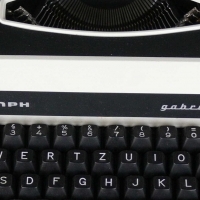Triumph Serial Numbers Yearly Calendar
Triumph Engine and Frame Serial Number Guide for years 1950 through 1983. Note:. From 1969, frame and engine numbers used a 2 letter prefix. The first letter denoted the month of manufacture, and the second letter denoted the year.

THE TRIUMPH TR7: BORN OF TROUBLED TIMESBy 1973, was in serious trouble. Parent company had managed to 'snatch failure from the jaws of success,' taking Triumph from incredible success in the late 1960s to the brink of insolvency by 1971. Through bad management, questionable backroom dealings (Jack Sangster sold off all the company assets at bargain-basement prices) and the onslaught of the (mainly ), Triumph suddenly found itself woefully outclassed by its rivals. Throughout the 1960s, the hot Triumph 650 twins, the, and the twin-carb legend were widely-regarding as the fastest motorcycles a 'normal person' could buy (ie: not expensive like a Vincent Black Shadow), the superbikes of their day. Then the Honda 750 Four arrived, and suddenly the old vertical twins were losing their relevance.
BSA not-so-quickly responded in 1971 with a whole new range of 650 twins, for which they designed virtually everything new except that one major component that needed changing: the engine. Instead, they created an entirely new all-welded steel double front downtube frame which carried the engine oil in its large-diameter backbone/seat post. There were new forks, new wheels & brakes, new bodywork, switchgear, the works.
However, the 3 major things the bike really needed to be competitive with the Japanese were painfully absent: Electric start, 5-speeds & a front disk brake. TRIUMPH TR7 MUCH-IMPROVEDThe launched amid major design & development problems - the engine wouldn't fit in the new frame!
The entire top end needed to be redesigned to make it work. That wasn't all; the seat height was over 34 inches, too tall for most riders. Santa lucia score pdf download.
Triumph Motorcycle Vin Number Location
It took until the 1973 model year for Triumph to sort out what was now called the Triumph TR6 Tiger.TRIUMPH TR7 750 WITH 5-SPEEDSIn 1973, the Triumph twins & finally got 5-speed transmissions & a front disk brake. 5-speeds had been optional since 1971, but were now standard across the line. While the 649cc TR6 Tiger remained, a new punched-out version was introduced called the TR7 750 Tiger. In fact, these early machines were bored from 71mm out to 75mm for a displacement of 724cc. However, later in the 1973 model year, a new cylinder casting made it possible to increase the bore again to 76mm for a displacement of 744cc.
The 82mm stroke remained unchanged on all models. TR7 BY THE NUMBERSStarting in 1971, all single-carb 650 & 750 twins were called 'Tigers'. Other than a brief one-year appearance in 1960, when the name TR7 was used to describe left-over that were being sold alongside. Otherwise, the TR7 name didn't appear again until the 1973 model year as the big-bore single-carb Tiger, as the TR7P (Police) & the TR7RV (Roadster w/5-speed). Early-1973 724cc Triumph TR7RVs had engine & frame numbers running from KH17122 to XH21715.
Later 1973 TR7P Police bikes with 744cc ran from GH35388 to GH35466. And the 744cc TR7RVs ran AH23727 to GH35387. From Model-Year 1974 until its demise in 1983, the only single-carb big twins were the Triumph TR7 Tiger, gone forever was the (with one exception: in 1983, the final year of Triumph production, one last 650 was briefly built under the name Triumph TR65, meant to be an entry-level version.). ABOVE: What's missing here? Oh yeah, the shifter! This 1976 Triumph TR6 was the first year for left-foot shift.
Heresy of heresies!!TRIUMPH TR7 - RIDING OFF INTO HISTORYWhile the twin-carb always stole the spotlight, the single-carb 750 Triumph TR7 and its predecessor was judged by many to be the better bike. While producing marginally less horsepower at max rpm, in real-world practical terms, the Tiger was just as fast at the Bonnie. And the single carburetor delivered much better drivability at low speeds.
Two cylinders breathing through one throat makes for higher vacuum & more even pulses, both very good for carburetors. So they pull harder at low engine speeds & in the higher gears when vacuum usually drops.

This becomes even more pronounced when you raise your final gearing (lower numerical ratio, ie: smaller rear sprocket). And of course one carb is always easier to tune than two. I've had both, and while people love looking at those twin carbs, the TR7s usually ran better.Triumph TR7 YEAR-BY-YEAR.